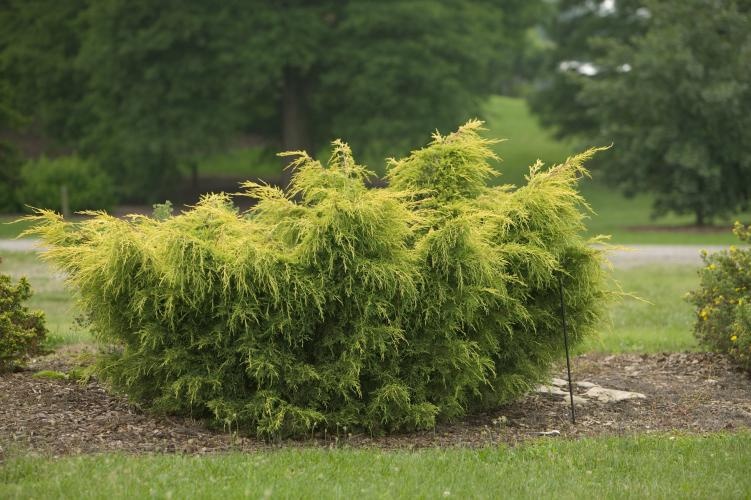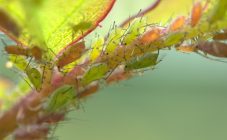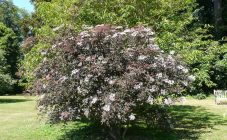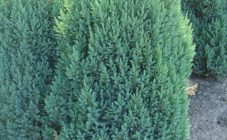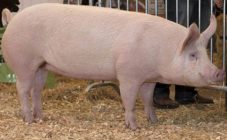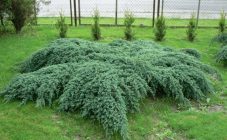The culture, known as the Kurivao Gold juniper, is one of the most striking representatives of shrub vegetation, which is native to China. Its plantings are most commonly found in public recreation areas, including city parks and gardens. However, it has been noticed that in recent years, amateur gardeners have also begun to actively cultivate this culture.
Description
The Chinese juniper kuriwao gold attracts attention not only for its excellent decorative properties, but also for the fact that it is able to effectively purify the air in places of growth. The latter property is most in demand if the garden is located within an urban area, where the atmosphere is heavily polluted.
Shrubs of this variety are equally good both when organizing a single planting, and when arranging landscape group compositions (their design is especially original in combination with conifers). At home, they are most often grown in spacious containers, which can be used as tubs or pots of suitable size.
Introduced to Russia from Southeast Asia (this event dates back to around the 19th century), the Asian juniper is a vigorous coniferous shrub.
Its description contains a number of characteristic features, presented in the following list:
- The crown of the bush is asymmetric and rather spreading.
- An adult plant reaches a height of 1.5-2 meters.
- Its diametrical size has about the same value.
In order for the characteristics of the junipers of the Chinese Kurivao Gold to be more complete, the following should be added to everything said:
- The branches of plants are located strictly perpendicular to the trunk and are covered with dense scaly needles, which have a golden hue at an early stage of development.
- As it ripens, it changes to a bright green color, and light silvery gleams appear in the depths of the needles.
- The Central Asian shrub bears fruit with berries resembling dark green cones in shape.
- When ripe, they turn completely black, creating an original picture of color contrast.
Juniper from Asia is easy to cut. This opportunity allows you to use it when creating plant compositions such as bonsai.
Growing features
Disembarkation
For the cultivation of juniper varieties kuriwao gold are suitable rather loose, loamy and sandy loamy soils, characterized by a slightly acidic reaction. Experts recommend preparing a special earthen composition for planting from a mixture of sod land, sand and peat, taken in a 1: 1: 2 ratio. Upon completion of planting, the plant needs abundant watering, carried out during the week.
When choosing a landing site, preference should be given to areas that are well warmed by the sun (with little shading).
This ornamental plant propagates by means of seedlings sold in standard pots, they are transplanted into the ground according to the principle of transshipment (that is, together with a lump of store soil). The dimensions of the pit are adjusted to the volume of the latter; usually they are 2-3 times larger than its size.At the same time, the depth at which this juniper variety is planted should not be less than 70 centimeters, and at the bottom of the dug hole, drainage from broken bricks is required, about 20 cm thick.
In addition, when planting, it is important to ensure that the root collar of each seedling protrudes from the ground by at least 5 cm. The distance between them can be set in the range from 0.5 to 2 meters. The exact value of this indicator depends on the purpose for which the planting is carried out, as well as on the estimated size of an adult plant.
Care
The perennial shrub Kurivao Gold is completely undemanding during the growing season. Traditionally, caring for him comes down to performing the following procedures:
- Watering the growing area.
- Weed removal (weeding).
- Top dressing and pruning.
Watering the planted shrub is recommended no more than once a week, while weeding is carried out regularly (as the soil becomes clogged).
In addition, twice a year (in spring and late autumn), the plant is fed with pre-prepared compost. Closer to spring, pruning of dried branches and diseased shoots is organized. Despite the fact that this variety has an enviable winter hardiness, it is advisable to sprinkle the plant with peat in the winter, and then cover it with a protective layer of pine branches (spruce branches).
Since the vertically growing branches of the variety can be damaged by heavy snowfalls, in late autumn its branches are tied to the trunk with a soft ribbon or twine.
Pests and diseases
With the arrival of spring, Chinese juniper bushes may show characteristic violations of the color of the needles (it becomes, as it were, burnt out, yellow). This phenomenon is associated with winter "burns" resulting from poor shelter.
Among other diseases and deviations from the normal development of this shrub, fungal rust and gray mold can be distinguished, for protection from which it is necessary to strictly maintain the specified intervals between the seedlings even during planting.
A number of known chemicals can be used to effectively combat them.
Decorating
The Chinese variety of juniper shrub attracts gardeners with its asymmetrical crown, in which dark and light coniferous zones harmoniously alternate.
In addition, it fits perfectly into the landscape design of any suburban area, on which the arrangement of a recreation area is supposed. This crop can also be used to plant miniature compositions in the form of alpine slides or similar structures.
In the final part of the review, we note that the plant that set a crossword record at one time (it is most often used in compiling crossword puzzles) is quite common in garden practice. Its popularity is facilitated by undemanding care and low agronomic requirements for the growing season of the crop.

